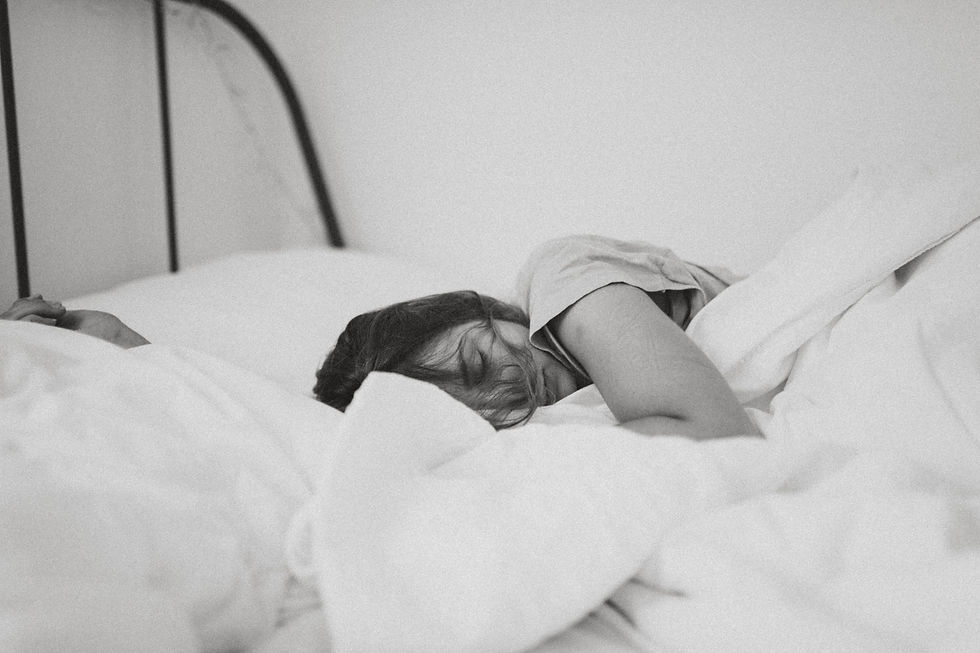Taking Care of the Human Spring
- Apollo Dynamics

- Jan 16, 2020
- 6 min read
In the last segment I outlined the importance of keeping the human spring in top shape to decrease the limitations on optimal performance, whether in athletics or just daily life. The topic of this post is about how to keep the human spring healthy and the importance of training in different movements to better avoid injury. In chapter 14 of his book, Dr. Stoxen describes a time when he was the passenger in a high-speed automobile accident. The driver was badly injured and had much pain, however Dr. Stoxen had no pain after the accident. This was because he had spent much time training his human spring and keeping it healthy.
Maintaining and improving the human spring has two requirements: 1. Strengthen the upper body’s spring suspension system to with resistance exercises, and 2. Spring train the human spring with spring training drills and plyometric exercises (lower body). Many exercises and stretches are outlined in Dr. Stoxen’s book in chapter 14, but some exercises can also be found in “How I Got My Wiggle Back: A Memoir of Healing” by Anthony Field. Before one can begin these exercises, there are 4 conditions that need to be met.
You can find a copy of “How I Got My Wiggle Back: A Memoir of Healing” by Anthony Field on Amazon here.
First, the athlete should be off all pain medication. The blocking of the nerves to indicate pain may result in an inability to find tight muscles and problem spots. Second, the athlete needs a release of all “super contractions”. Protective reflexes cause the muscle super contractions that compress outlets and joints; they are dominant reflexes that maintain compressive tension on the human spring system. This happens regardless of the desire to release the tension or not. The ability to increase or decrease tension on the muscles in the spring system is necessary for any movement; if an exercise program is started before all compressive forces are removed from these super contractions, the athlete may be at risk for injury, exacerbation of a preexisting injury, or reinjury of a treated part of the body.
The third condition is the need to flush out all inflammation. If inflammation is in the area during muscle contraction, it can get pushed deeper into the nerves, muscles, and spindle cells, causing pain receptors to activate in that area. While anti-inflammatory supplements and a good diet can help, a direct massage to the area has a better effect of inflammation removal. There are many vibrating massagers that can help, but I personally recommend Dr. Stoxen’s product Vibeassage (be sure to mention this blog if you order!). It has a better motor and larger massage head to drive vibrations into the deep muscle tissues without damaging superficial tissues like some products on the market. The larger massage head also increases the area of effect, decreasing the time it takes to adequately flush out inflammation. More information is found at the end of this segment.
The last condition is to keep all joints moving freely and free from subluxations (partial dislocations or misalignments). If there is any locking of the joint, spring or joint play, there will be strain on tissues when added force is applied to the joint throughout movement. Improper joint movement can degrade the joint and other parts of the body that depend on it. For example, an over-pronating ankle can cause the knee to tilt slightly inward, causing an imbalance in movement of the hips.
After all four conditions are met, there are several exercises and self-massage techniques you can use to ensure that your spring remains unlocked and healthy. I will cover all of these and include example photos in our blog about fitness and exercises, however I will list some exercises (credit goes to "How I Got My Wiggle Back" for these) approved by Dr. Stoxen that you can start doing right now. You will need to take your shoes and possibly socks off for these:
Unlock the Big Toe Spring: Apply pressure with your thumb to the base of the big toe in the midarch (underside of the foot in the middle). Move down the foot one thumb-print at a time, keeping pressure along the way.
Unlock Toe Spring #2: Repeat instructions from above, except now you target your second toe (next to the big toe).
Unlock Toe Springs (Top): On the top of your feet, locate the beginning of your toe bones (top of the arch). Apply pressure between the big and 2nd toes with your thumb, gradually moving down your foot one thumb-print at a time. Then repeat in between your 2nd and middle toe.
Unlock Calf Spring: Apply pressure at the bottom of the calf, moving up and massaging along the way. Do this for both legs.
Plantar Flexion Stretch: Sitting cross-legged or with one leg crossed, align your fingers on the top of your toes and curl them down. You should feel a stretch on the top of your foot, and you may feel a stretch in your shins. Stretch until the pain subsides; pain is an indicator that there is a lot of tension in your ligaments, so stretch out well!
Foot & Ankle Roll: Standing with your feet shoulder width apart, massage the ground alternately with the outside and inside edges of each foot. Shift your body weight over each foot to individually work them for several repetitions.
Lateral Lunge: This is a straight lunge working one leg at a time. Clear a desired length and, starting with your arms at your side, lunge forward with one leg while mimicking the leg movements with your arms. Hold the position briefly before repeating. After working the first leg, start over the other.
Circle Walk: Use cones (if available) to outline a circle about 12 feet in diameter. Walk around this circle at a normal pace, keeping your pelvis directly over or in front of your foot as it lands. Focus on landing on the front or middle of your foot to allow the arch to descend. Continue in one direction until desired, then repeat in the opposite direction. Feel free to shrink the circle down as you go (no less than five feet).
Zig-Zag Walk: Use cones (if available) to create a line, placing them three to five feet apart. Walk in a zig-zag route between the cones, leaning inward as you pick up speed. Keep that same walk as the Circle Walk; land on the fore or mid-foot, keep your hips over or in front of your feet.
These exercises will be expanded upon later, and I will drop a link in here when I have them ready!
Another part of keeping a healthy spring system is understanding the neurodevelopment process of movement. In chapter 6 of Ralph Reiff’s book “A Field Guide to Athletic Performance: The 24-Hour Athlete”, Ralph describes an incident with a 32-year-old runner who ran a consistent 10-16 miles per week. This runner had tolerated medial knee pain on her right side for about 8 weeks before experiencing discomfort in her lower leg on the left side. What happened was that the runner had spent so much time in a neurodeveloped process ideal for a flat, smooth, linear motion at a certain pace, yet had much less neurodevelopment for other motions. So, when the time came to jump over a tree limb in her path, the runner’s musculoskeletal system failed her when her neurodevelopment process because of that disruption. This load and instantaneous aversion to her normal neuroactivities caused injury to the medial tethers of her knee. I won’t talk about how an athlete should play multiple sports here, but I will say that an athlete shouldn’t focus on being perfect in one movement. Creating a neurodevelopment process specific to one kind of movement will most likely lead to an overuse injury down the road.
To bring it all together, make sure that an athlete is making correct movements during training exercises: keep the correct limitations in joint mobility, correct soft tissue tightness as needed, and keep correct muscle contraction patterns that move the body. The human spring is strong when it moves normally. Correct plyometric exercises combined with different resistance exercises to load the spring in different ways are key to maintaining a healthy spring. As we continue, I will post in our next blog about fitness and exercises about the topics discussed in this blog, so please check back periodically for new information! Next week I will talk about my personal experience with a common injury that I mistakenly walked on, which caused catastrophic failure in multiple muscles later.
For more information on the Ralph’s notes on athletes, read his book “A Field Guide to Athletic Performance: The 24-Hour Athlete” here.
To find more information on Vibeassage, please visit Dr. Stoxen's Store or call 260-687-9811.




Comments